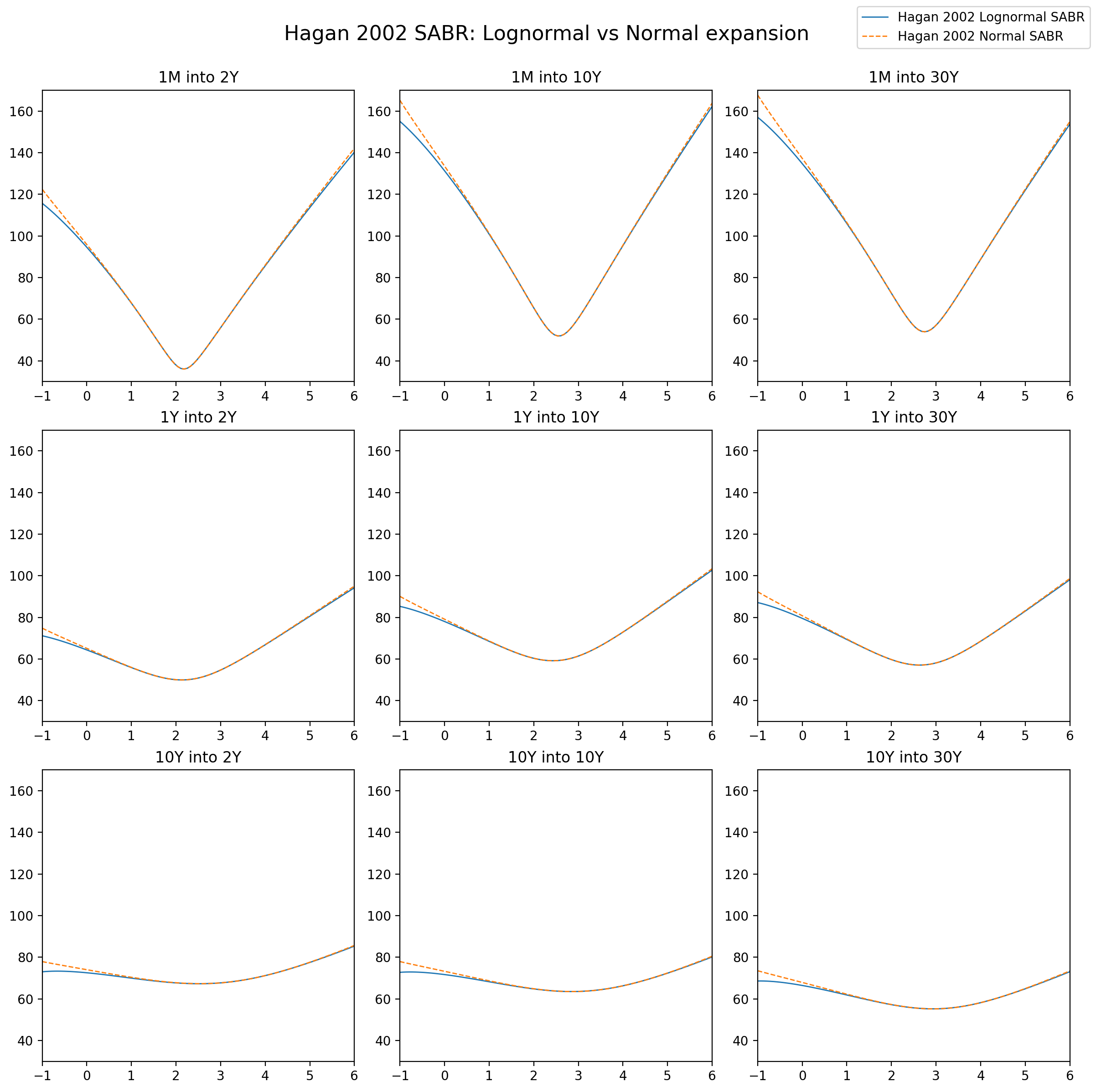Python implementation of SABR model.
SABR (Stochastic Alpha Beta Rho) is a financial volatility smile model widely used for interest rates options such as swaptions or cap/floors. This Python library implements its Hagan 2002 specification. For more information about the model itself, please consult the original paper or Wikipedia.
Core pySABR functions require numpy & scipy to run. The web microservice is based on falcon, which can itself be run with waitress (Windows) or gunicorn (Linux). Finally, the Excel function wrapper for the web microservice requires Windows and Excel 2013+.
pip install pysabr
pysabr provides two interface levels:
- A high-level, SABR model object interface, that lets the user work with the standard market inputs (ATM normal vol) and easily access model results (SLN or N vols, option premiums, density).
- A low-level interface to the Hagan expansions formulas and to the Black Scholes model.
This example notebook runs an interesting comparison between the Lognormal and Normal SABR expansions available in Hagan's 2002 paper. Make sure to check it out!
Interpolate a volatility using ATM normal vol input:
from pysabr import Hagan2002LognormalSABR
# Forward = 2.5%, Shift = 3%, ATM Normal Vol = 40bps
# Beta = 0.5, Rho = -20%, Volvol = 0.30
sabr = Hagan2002LognormalSABR(f=0.025, shift=0.03, t=1., v_atm_n=0.0040,
beta=0.5, rho=-0.2, volvol=0.30)
k = 0.025
sabr.lognormal_vol(k) * 100
# returns 7.27
sabr.normal_vol(k) *1e4
# returns 40Calibrate alpha, rho and volvol from a discrete shift-lognormal smile:
from pysabr import Hagan2002LognormalSABR
import numpy as np
sabr = Hagan2002LognormalSABR(f=2.5271/100, shift=3/100, t=10, beta=0.5)
k = np.array([-0.4729, 0.5271, 1.0271, 1.5271, 1.7771, 2.0271, 2.2771, 2.4021,
2.5271, 2.6521, 2.7771, 3.0271, 3.2771, 3.5271, 4.0271, 4.5271,
5.5271]) / 100
v_sln = np.array([19.641923, 15.785344, 14.305103, 13.073869, 12.550007, 12.088721,
11.691661, 11.517660, 11.360133, 11.219058, 11.094293, 10.892464,
10.750834, 10.663653, 10.623862, 10.714479, 11.103755])
[alpha, rho, volvol] = sabr.fit(k, v_sln)
# returns [0.025299981543599154, -0.24629917636394097, 0.2908005625794777]Interpolate a shifted-lognormal volatility:
from pysabr import hagan_2002_lognormal_sabr as hagan2002
[s, k, f, t, alpha, beta, rho, volvol] = [0.03, 0.02, 0.025, 1.0, 0.025, 0.50, -0.24, 0.29]
hagan2002.lognormal_vol(k + s, f + s, t, alpha, beta, rho, volvol)
# returns 0.11408307Calibrate alpha from an ATM lognormal vol:
from pysabr import hagan_2002_lognormal_sabr as hagan2002
[v_atm_sln, f, t, beta, rho, volvol] = [0.60, 0.02, 1.5, 1.0, 0.0, 0.0]
hagan2002.alpha(v_atm_sln, f, t, beta, rho, volvol)
# returns 0.60Compute an option premium using Black formula:
from pysabr import black
[k, f, t, v, r, cp] = [0.012, 0.013, 10., 0.20, 0.02, 'call']
black.lognormal_call(k, f, t, v, r, cp) * 1e5
# returns 296.8806106707276pySABR includes a web microservice exposing the two main functions of the library: volatility interpolation and alpha calibration. Those two functions are available through a simple REST API:
# Returns a lognormal vol
curl http://127.0.0.1:5000/sabr?k=1.0&f=1.0&t=1.0&a=0.20&b=1.0&r=0.0&n=0.2
# Returns a calibrated alpha parameter
curl
http://127.0.0.1:5000/alpha?v=0.6&f=1.0&t=1.0&b=1.0&r=0.0&n=0.2To run the microservice on Linux:
gunicorn -b '0.0.0.0:5000' web.app:app &>> pysabr_web.log &To run the microservice on Windows:
python -mwaitress --port=5000 web.app:appThe web microservice can conveniently be called from Excel 2013+ using the WEBSERVICE spreadsheet function. For even more convenience, pySABR provides a small VBA wrapper mapping directly to the /sabr and /alpha resources. VBA code is available under pySABR_web.bas
$ python -m pytest